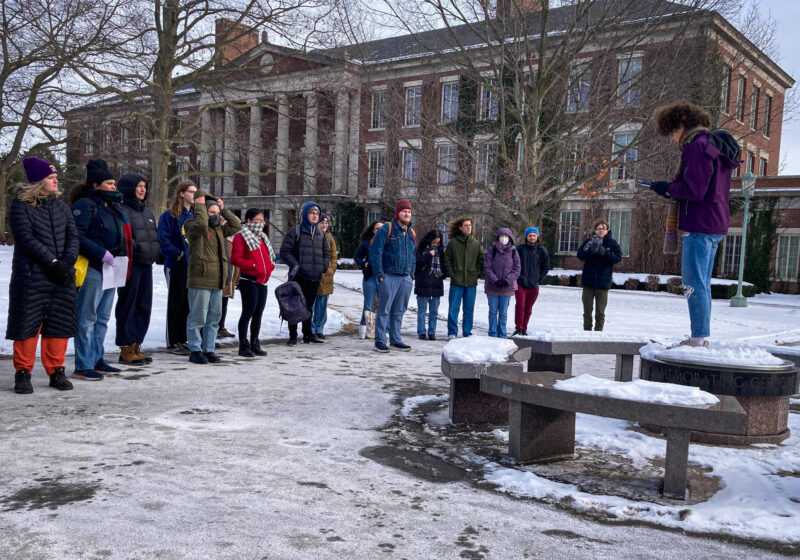Valentine’s Day first started in Rome in the third century A.D. Feb. 14th was a holiday to honor Juno, the Queen of the Roman gods and goddesses. She was also known as being the goddess of women and marriages.The true origins of the name “Valentine’s Day” are debatable. There are several Saint Valentine’s that the Catholic Church recognizes. In the third century, Emperor Claudius II ruled Rome with an iron hand and a thirst for blood. Claudius was having trouble getting men to enlist in his armies to fight his wars. He realized that many men refused to join the military because they had homes and families that they did not want to leave behind. Realizing that the prime specimens for combat were young men, he banned all engagements and marriages in Rome, a move previously unheard of in tyrannical leadership.Proving that love can never be stopped, a priest, who would later be known as the good Saint Valentine, was secretly marrying couples. When the Prefect discovered this fact Valentine was dragged into court. The Prefect decreed that Valentine would be beaten to death with clubs and then decapitated. Little did he know that striking down the man would only magnify his powers a million fold and guarantee him a place in martyrdom, not to mention bring romance to happy lovers all over the Western world. Feb. 14, 270 A.D. is a day that will be remembered by Catholic church-goers and happy couples alike.Just as Saint Valentine gave his life for love so too must we endeavor to effect gender equality. In the late 1990s, a statistic concerning the number of women dying from abuse was released. It compared the number of men dying in combat during the Vietnam War to the number of women being killed by someone related to or involved with them. The numbers were shocking and even more shocking was the response, or the lack thereof. Upwards of 58,000 men had died during the Vietnam War, while around 51,000 women had been killed by someone who claimed to love them. Outrage about the war was abundant, but who fought for these women? Where was their saint struggling to give them protection and rights?In the summer of 1990, this statistic became a catalyst for a number of women’s groups in Cape Cod to develop a program that would expose the public to this reality and force them to consider the impact of violence against women. They started the Clothesline Project to help break the silence and expose the issue of violence against women.A clothesline was selected to be the means of expression because doing laundry has always been considered the work of a woman. The idea was straightforward – to have each woman use a T-shirt to tell their story in art and written form. The shirts would then be gathered and arranged along a clothesline so that people can see them.The first clothesline project was in Massachusetts and featured 31 shirts. Today there are over 500 Clothesline Projects in 41 states and five countries with an estimated 50,000 to 60,000 shirts. This small grass roots campaign has had far reaching effects that stretch as far as Tanzania and as close as Rochester.UR’s Women’s Caucus, in concordance with Alpha Phi, will be making T-shirts to display around campus. Senior and president of the Women’s Caucus Jennifer Richter hopes that this year’s Clothesline Project will be very effective in raising awareness about women’s issues. As of this Friday hundreds of shirts, each conveying one woman’s struggle, will be on display around Wilson Commons.Violence against women is a topic often ignored by many. Richter believes that the Clothesline Project will have a big impact on people. “Having this visual stimulus is kind of overwhelming,” Richter said, “that these are all people who have been affected, whether it was their sister, friend or mother. We even have men making shirts about violence that has happened to a loved one. These shirts are important to let people know that they aren’t alone.”Valentines Day is known for advocacy of women’s rights as well as stealing their hearts. Eve Ensler’s play, the “Vagina Monologues,” is performed at universities nation-wide on what is known as V-day.The Vagina Monologues is a play that Ensler wrote to convey the immense beauty of the female sex organ, an appreciation lost in a society that is becoming more and more patriarchal.The “Vagina Monologues” generates broader attention to the worldwide epidemic of violence against women, including rape, incest, spousal abuse, sexual slavery and female genital mutilation.The V in V-Day stands for Victory, Valentine and Vagina. the Rochester Institute of Technology and Monroe Community College will be staging performances of the “Vagina Monologues.” The times are Thursday 7:30 p.m., Friday noon, and Saturday 7:30 p.m. for MCC and at RIT 8 p.m. Friday, Saturday and Sunday. Proceeds go to benefit women’s groups.T-shirts for the Clothesline Project at UR can be made tonight from 5 to 7 p.m. in the Hirst Lounge of Wilson Commons.Goldner can be reached at bgoldner@campustimes.org.
Campus Times
State of the Campus Times: A review through 2024
We increased our print circulation (how many papers we print) from 2,000 to 2,800 and increased the size of our paper from 12 pages to 16 pages — our longest since 2017. We bolstered our online readership netting a total count of 664,257 views from 419,478 unique users.
advertisement
Society is pure advertising: an anti-consumption retrospective
It’s in our pockets, on our screens, and even in our conversations — always listening, always watching
Graduate Student Union
Students protest against incoming presidential administration, calling it “fascist”
Held in the days following President Trump’s inauguration, the rally featured a combination of prepared speeches, calls to action, an open forum, and chanting.



